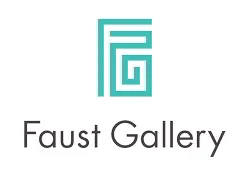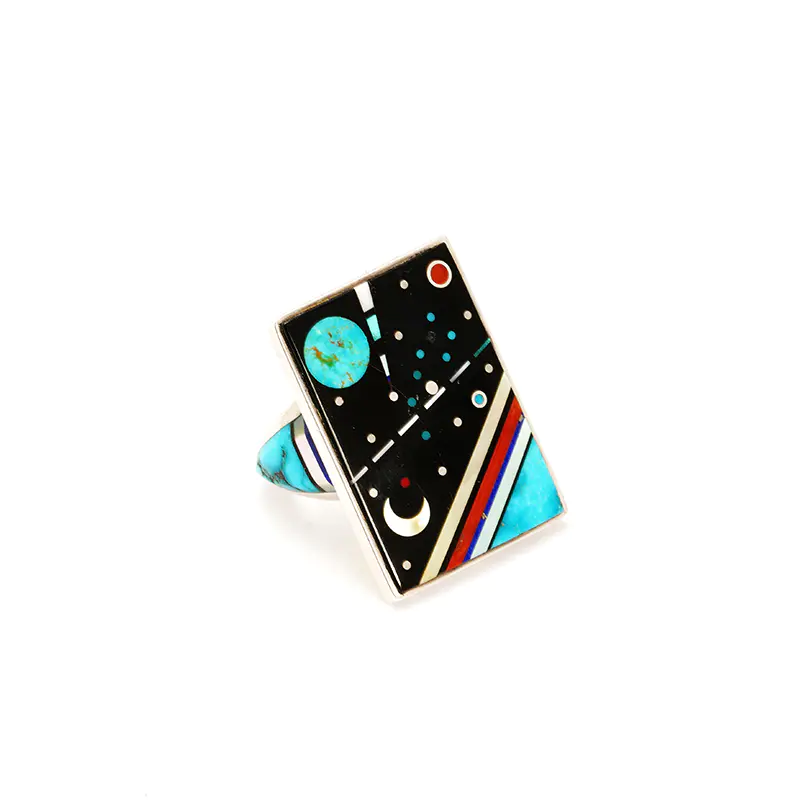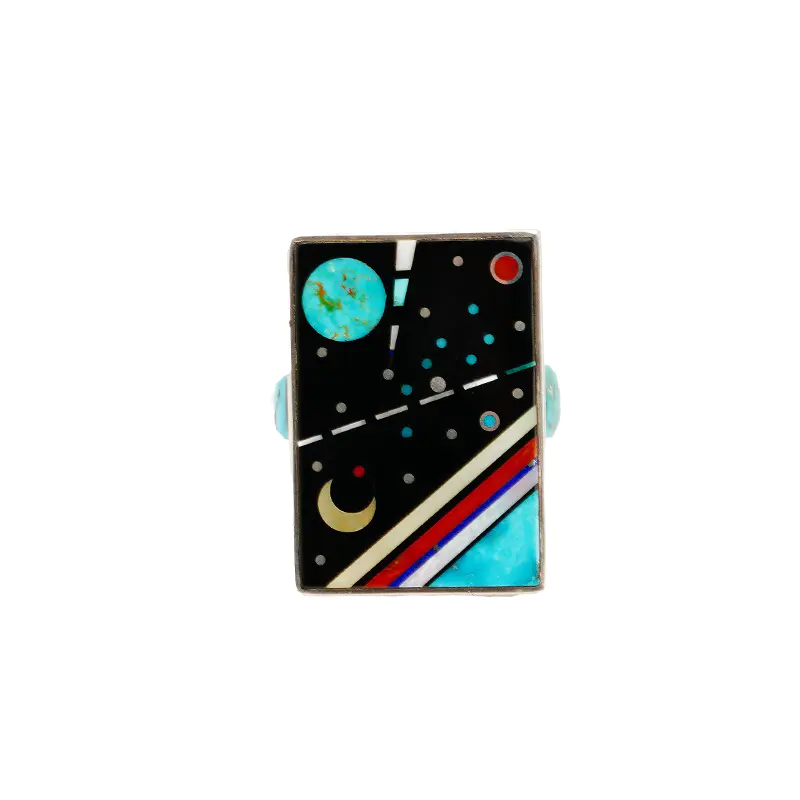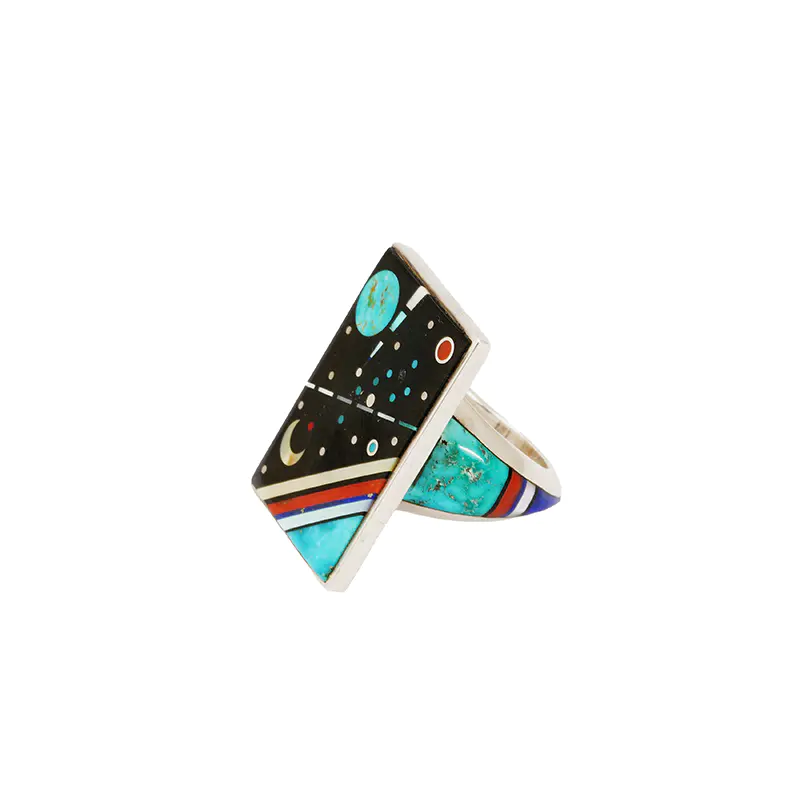Jesse Monongya – Master Jeweler of Navajo and Hopi Heritage
1952–2024
Jesse Monongya was a celebrated Native American jeweler of Navajo and Hopi descent, widely known for his extraordinary inlay work and symbolic, sculptural designs. Born in Phoenix, Arizona, in 1952, he was raised by Navajo relatives in the Chuska Mountains near Two Grey Hills, New Mexico, after being abandoned at a young age. His early life was shaped by deep cultural traditions and spiritual teachings, which later informed his artistry.
A turning point in his life came in 1975, when Monongya reunited with his biological father—renowned Hopi jeweler Preston Monongye. Under his father’s mentorship, Jesse began refining his craft, combining Hopi-inspired design sensibilities with Navajo symbolism and a unique vision all his own.
Monongya’s work is best known for its cosmic themes and masterful stone-to-stone inlay technique. Using materials such as lapis lazuli, turquoise, coral, opal, and fossilized ivory, he created wearable landscapes, spiritual motifs, and celestial symbols. His signature bear pendants, symbolizing strength and protection, became some of his most iconic creations. These intricately inlaid bears often featured stars and planetary elements set against jet or dark backgrounds, evoking the cosmos.
His career spanned decades, during which he earned numerous awards, including Best of Show at the Inter-Tribal Indian Ceremonial in Gallup and Best of Division at Santa Fe Indian Market. His work has been collected and exhibited by leading institutions such as the Heard Museum, the Smithsonian National Museum of the American Indian, and the Museum of Modern Art.
Jesse Monongya passed away in Scottsdale, Arizona, on August 6, 2024, at the age of 71. He is remembered not only for his artistic mastery but also for the spiritual depth and cultural richness embedded in each of his creations. His legacy lives on through his influence on younger generations of Native American jewelers, including his own children and apprentices.



